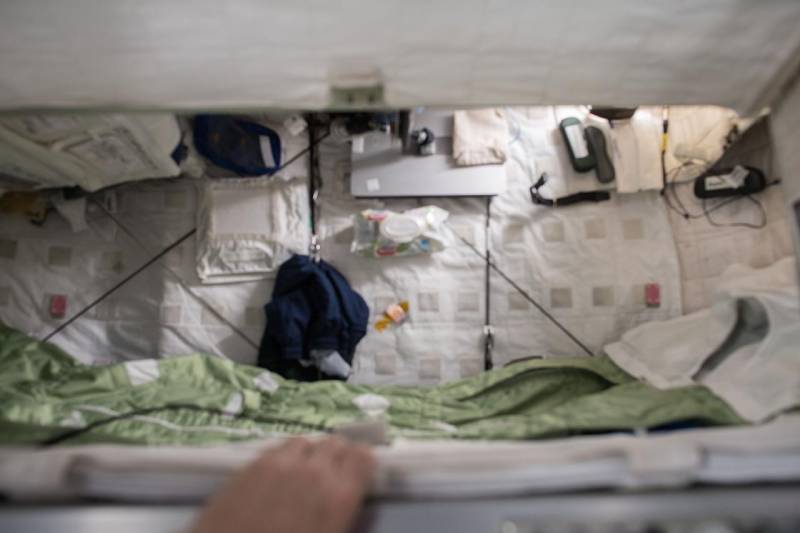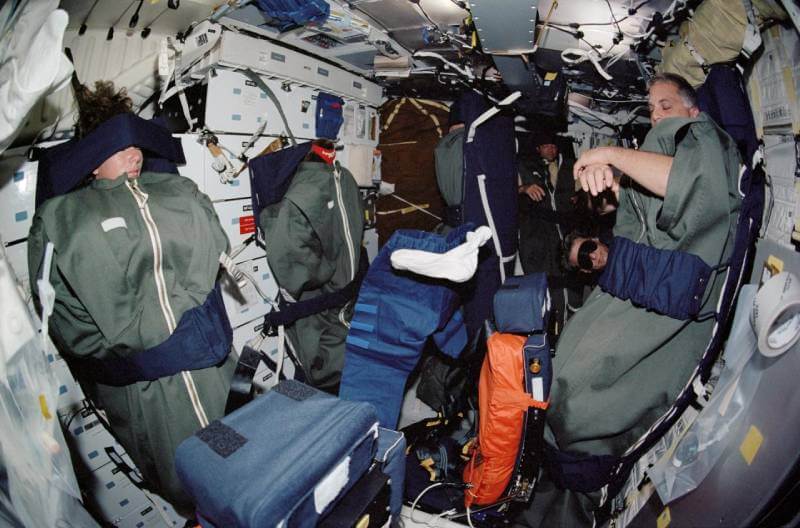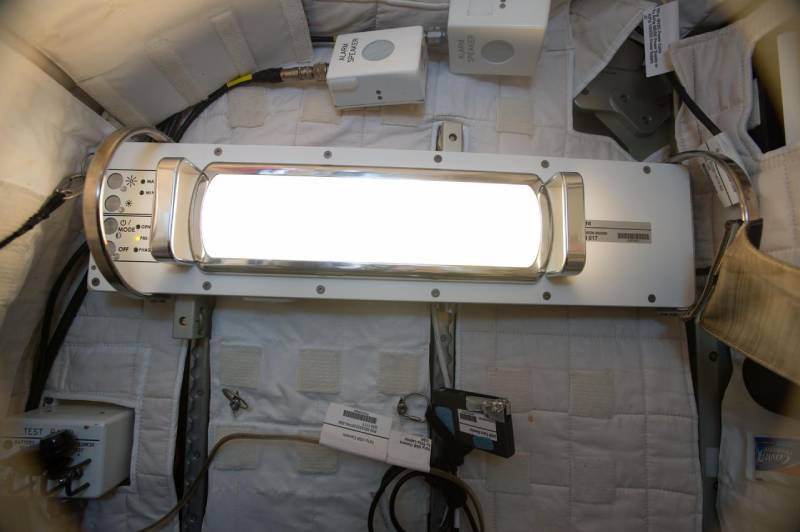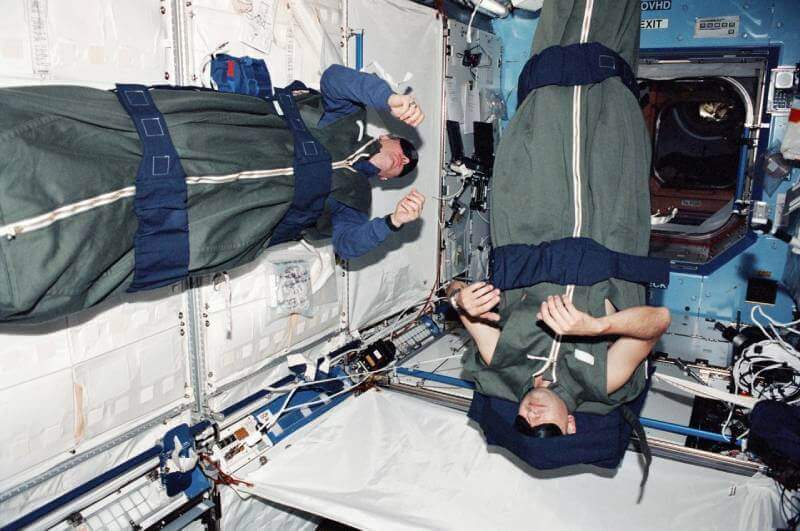Have you ever wondered how do astronauts sleep in space? It might seem like a simple question, but the environment in space presents unique challenges for astronauts when it comes to getting a good night’s sleep.
In this article, we’ll explore where and how astronauts sleep in space, the effects of sleep deprivation, and how sleep quality is being improved for these out-of-this-world explorers.
Where Do Astronauts Sleep?
Astronauts require designated sleeping areas to get some much-needed rest while in space. The specific location depends on the spacecraft, but let’s explore some shared sleeping quarters used by astronauts.
Sleeping Quarters in Space
When you think of a cozy bedroom, you probably imagine a comfortable bed, fluffy pillows, and soft blankets. But in space, things are quite different due to the microgravity environment. This unique setting means that astronauts don’t need a traditional bed. Instead, they sleep in specially designed-sleeping pods.
These sleeping pods on the ISS are compact and practical. They’re about the size of a small closet, but that’s enough space for a sleeping bag, a laptop, and personal belongings. You might wonder why astronauts need a computer in their sleeping pod. They often use it for entertainment or communication with their families back on Earth during their off-duty hours.

One of the essential features of the ISS sleeping pods is the door. A door helps create a sense of privacy and personal space, which is crucial for astronauts living and working in such close quarters with their crewmates for months.
Additionally, each pod is equipped with ventilation and noise-reducing padding. This ensures a comfortable sleeping environment by maintaining proper air circulation and minimizing noise disruptions from the rest of the ISS.
How Do Astronauts Sleep in Space Pods?
Now let’s talk about how astronauts sleep in these pods. In microgravity, astronauts don’t need a mattress or pillow to support their bodies. Instead, they float while sleeping, which is pretty cool if you think about it! In addition, they use a sleeping bag attached to the wall of the sleeping pod. This keeps them from floating around and accidentally bumping into things while asleep.
The sleeping setup on the ISS differs from what astronauts experienced on some of the now-retired shuttles. There, they would sleep in sleeping bags attached to the walls or ceiling of the mid-deck area, floating freely.

In contrast, the sleeping arrangement on NASA’s Orion spacecraft, designed for deep-space missions, will feature a common sleeping area. This means that the crew members will sleep close to each other without individual sleeping pods, which could promote camaraderie and team bonding during long missions.
How Do Astronauts Sleep in Space?
Now that we know where astronauts sleep let’s dive into how they sleep in a weightless environment.
In space, there’s no gravity to hold you down on a bed, which means astronauts have to get creative when it comes to sleeping. Instead, they rely on specially designed sleeping bags that can be attached to walls or ceilings inside their spacecraft. These sleeping bags have straps and zippers to help keep astronauts secure and snug while they rest.
But don’t worry; they’re not entirely confined! The sleeping bags also come with armholes, which means astronauts can still read their favorite books or browse on their laptops while tucked in
Sleep Restraints in Space
Now, let’s talk about those sleep restraints. These are super important because they help keep astronauts in place while sleeping. Without them, they might end up floating around the cabin and accidentally bumping into equipment or even their fellow crew members. Sleep restraints are usually made from fabric straps that wrap around an astronaut’s body, ensuring they’re safe and secure while they sleep.
Adjusting to Sleep in Space
But what about the quality of sleep? You might be wondering if astronauts can get a good night’s rest in these unusual conditions. Well, research has shown that while adjusting can take some time, astronauts generally get used to sleeping in space.
They usually follow a regular sleep schedule, as we do here on Earth, aiming for around 8 hours daily. However, because of their work’s dynamic and demanding nature, they might not always get a full night’s sleep. To combat this, they’re often encouraged to take short naps.
Microgravity Challenges
Sleeping in space can be challenging due to the microgravity environment. Astronauts practice in neutral buoyancy pools to help adapt to living in a zero-gravity environment. Floating around might seem fun initially, but it can be disorienting and make it difficult to fall asleep. Plus, without gravity, the body’s fluids shift, which can cause congestion and discomfort during sleep.
Circadian Rhythms
Astronauts also have to adjust to the altered day-night cycles while in space. The ISS orbits Earth every 90 minutes, which means astronauts experience 16 sunrises and sunsets every 24 hours! This constant change in lighting can wreak havoc on their circadian rhythms, making it harder to establish a regular sleep schedule.
Effects of Sleep Deprivation
Sleep deprivation can have severe consequences for astronauts. For example, insufficient sleep can lead to reduced cognitive function, impaired decision-making, and decreased motor skills. These effects can be hazardous during space missions, where astronauts must be alert and focused to carry out their tasks effectively.
Improving Sleep in Space
Various strategies and technologies are being developed and implemented to address the issue of sleep deprivation and improve sleep quality for astronauts.
Sleep Technology
Astronauts use tools like sleep masks, earplugs, and white noise machines to help block out light and noise, creating a more conducive sleep environment. On the ISS, the lighting system has been updated to include adjustable LED lights that mimic the natural progression of daylight, helping regulate astronauts’ circadian rhythms.

Sleep Strategies
Astronauts are encouraged to establish a consistent sleep schedule and create a bedtime routine to signal their bodies that it’s time for sleep. They’re also advised to avoid caffeine and other stimulants close to bedtime and to engage in relaxation techniques like deep breathing or meditation.
Sleep Research
NASA and other space agencies continue researching sleep in space to develop better sleep strategies and technologies for future missions. This research benefits astronauts and contributes to understanding sleep disorders and sleep-related issues on Earth.
Final Thoughts
Now that we’ve answered how astronauts sleep in space, it’s pretty clear that it’s a unique and challenging experience! Sleeping in zero gravity poses various obstacles for astronauts, including disrupted circadian rhythms and unfamiliar sleeping environments. But that’s not all; adjusting to microgravity can also significantly challenge their bodies.
Despite these obstacles, ongoing research and technological advancements are helping improve the sleep quality of astronauts and mitigate the effects of sleep deprivation. For example, scientists are working hard to develop specialized sleeping quarters and beds to help astronauts feel more at home in space. They’re also looking into innovative lighting systems and carefully monitoring the astronauts’ sleep patterns to understand better how to improve their sleep.
As we explore outer space and embark on more extended missions, ensuring astronauts get a good night’s sleep is more important than ever. It’s a crucial aspect of space travel that cannot be overlooked. So, next time you think about space travel, don’t forget the challenges of sleeping in space and the fantastic work being done to help astronauts get the rest they need!

